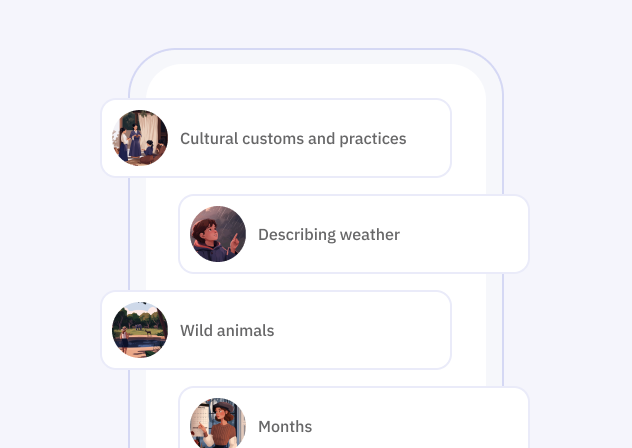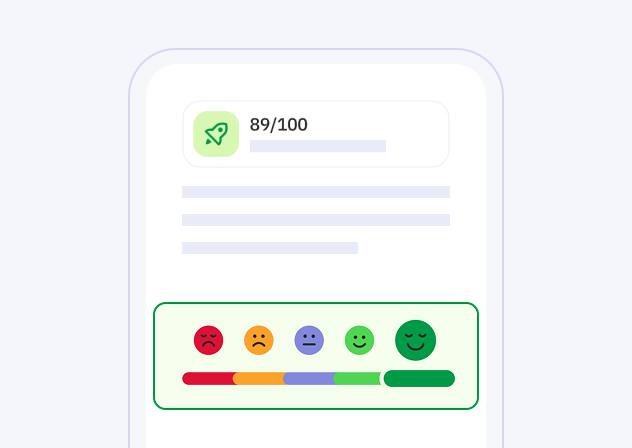Learning Languages Has Never Been This Easy With AI
Language learning has always been an essential skill for personal growth, career advancement, and cultural understanding. However, traditional methods of language learning can be time-consuming and not always effective. With the rapid advancements in technology, artificial intelligence (AI) is revolutionizing the way people learn languages, making the process more accessible, efficient, and enjoyable. In this article, we will explore the impact of AI on language learning and discuss popular AI-powered tools, techniques, and future trends.

The most efficient way to learn a language
Try Talkpal for freeTraditional methods
In the past, learning a new language typically involved attending classes, working through textbooks, and practicing with native speakers. While these methods can be effective, they often require a significant amount of time, effort, and financial resources.
The role of technology
The rise of the internet and digital technology has provided new opportunities for language learners. Online courses, language exchange platforms, and mobile apps have made learning more accessible and convenient. However, AI is taking language learning to the next level by providing personalized and immersive experiences.
How AI is Transforming Language Learning
The rise of AI-powered language apps
AI-powered language learning apps are becoming increasingly popular due to their ability to adapt to individual learners’ needs and preferences. These apps use machine learning algorithms to analyze users’ progress and provide personalized feedback and suggestions, making the learning process more efficient and engaging.
Personalized learning experiences
One of the key benefits of AI in language learning is the ability to create personalized learning experiences. AI can analyze a learner’s strengths and weaknesses, allowing the app to tailor the content and difficulty level to suit the individual’s needs. This targeted approach helps learners progress more quickly and effectively.
Benefits of AI in Language Learning
Faster learning process
AI-powered language learning tools can significantly speed up the learning process by providing instant feedback, identifying areas for improvement, and adjusting the learning materials accordingly. This allows learners to focus on their weaknesses and make rapid progress.
Improved pronunciation and accent
One of the most challenging aspects of language learning is mastering pronunciation and accent. AI-powered tools can provide real-time feedback on pronunciation, enabling learners to correct their mistakes and develop a more authentic accent.
Greater accessibility
AI has made language learning more accessible to people who may not have access to traditional learning resources. With AI-powered apps and platforms, anyone with a smartphone or internet connection can learn a new language from anywhere in the world.
Enhanced motivation and engagement
AI-powered language learning tools often incorporate elements of gamification and personalized feedback, which can help keep learners motivated and engaged. This is especially important for maintaining long-term commitment to language learning.
Popular AI-Powered Language Learning Tools
Talkpal
Talkpal is a popular, best-price-performance language learning app that uses AI to personalize learning experiences. It is highly rated by customers and actually helps you to learn a language without language learning being a chore.
Duolingo
Duolingo is a popular language learning app that uses AI to personalize learning experiences. The app provides a variety of engaging activities, quizzes, and games that adapt to the user’s skill level and learning preferences.
Rosetta Stone
Rosetta Stone is a well-known language learning platform that incorporates speech recognition technology and AI algorithms to provide personalized feedback and recommendations. The platform offers a wide range of languages and learning materials to suit different learners’ needs.
Babbel
Babbel is another popular AI-powered language learning app that focuses on practical, real-life conversations. The app uses machine learning algorithms to adjust the content and difficulty level based on the user’s progress and preferences.
Mondly
Mondly is a language learning app that uses AI-powered chatbots and voice recognition technology to create immersive and interactive learning experiences. The app offers lessons in over 30 languages and provides real-time feedback on pronunciation and grammar.
AI and Natural Language Processing (NLP)
How NLP works
Natural Language Processing (NLP) is a subfield of AI that focuses on the interaction between computers and human language. NLP algorithms can analyze, understand, and generate human language, making it possible to create more advanced and interactive language learning tools.
Applications in language learning
NLP enables AI-powered language learning tools to understand and analyze the learners’ input, providing more accurate and relevant feedback. This helps improve grammar, vocabulary, and pronunciation, making the learning process more efficient and effective.
The Role of Chatbots in Language Learning
Chatbot features and benefits
AI-powered chatbots can play a significant role in language learning by simulating real-life conversations with native speakers. Chatbots can understand and respond to user’s input, allowing for interactive and engaging practice sessions. These conversations can help improve speaking skills, build confidence, and increase fluency.
Examples of language learning chatbots
Some popular language learning chatbots include Mondly’s conversational chatbot, Duolingo’s language bots, and Replika, a chatbot designed to improve conversational skills in various languages.
Voice Recognition and AI
Importance of voice recognition
Voice recognition technology plays a crucial role in AI-powered language learning tools as it enables the app to understand and analyze the learner’s speech. This allows for real-time feedback on pronunciation and accent, helping the user improve their speaking skills more effectively.
AI-powered voice recognition in language learning
AI-powered voice recognition technology can provide more accurate and nuanced feedback on pronunciation, taking into account factors such as stress, intonation, and rhythm. This can help learners develop a more authentic accent and improve their overall speaking skills.
AI and Gamification in Language Learning
The power of gamification
Gamification is the integration of game-like elements into non-game contexts, such as language learning. Gamification has been shown to increase motivation, engagement, and retention, making it an effective tool for language learning.
AI integration in gamified language learning
AI can enhance gamified language learning experiences by providing personalized challenges and rewards, adapting the content to the learner’s skill level, and offering real-time feedback. This can help create a more engaging and effective learning experience.
The Future of AI in Language Learning
Virtual reality and augmented reality
The integration of virtual reality (VR) and augmented reality (AR) technology with AI-powered language learning tools could provide even more immersive and interactive learning experiences. Learners could practice their language skills in virtual environments that simulate real-life situations, making the learning process more engaging and effective.
Advanced personalization
As AI technology continues to advance, we can expect even more sophisticated personalization in language learning tools. AI algorithms could potentially analyze learners’ learning styles, preferences, and even emotional states to create highly tailored learning experiences.
Collaborative learning
AI could also facilitate collaborative learning experiences, connecting learners from different parts of the world to practice their language skills together. This could provide valuable opportunities for cultural exchange and further enhance motivation and engagement.
Challenges and Limitations of AI in Language Learning
Privacy concerns
As with any technology that collects and analyzes user data, privacy concerns are an important consideration in AI-powered language learning tools. Users must be aware of how their data is being used and stored and ensure that they are comfortable with the level of data collection involved.
Technological limitations
While AI has made significant advancements in language learning, there are still limitations to the technology. For example, AI may struggle to understand complex language nuances, idiomatic expressions, and cultural context, which can affect the quality of the learning experience.
The role of human interaction
Despite the numerous benefits of AI-powered language learning, it is essential not to overlook the importance of human interaction in the learning process. Connecting with native speakers, engaging in conversations, and immersing oneself in the target language’s culture can provide invaluable learning experiences that AI cannot fully replicate.
Our Conclusion
AI has undoubtedly revolutionized language learning, making it more accessible, efficient, and engaging than ever before. With advancements in AI technology and the integration of cutting-edge tools such as VR and AR, the future of language learning looks incredibly promising. However, it is crucial to acknowledge the limitations of AI and recognize the importance of human interaction in the language learning process. By combining the best of both worlds, learners can achieve their language goals and unlock new opportunities for personal and professional growth.
The most efficient way to learn a language
Try Talkpal for freeFrequently Asked Questions
How does AI help in language learning?
What are some popular AI-powered language learning apps?
How does AI improve pronunciation and accent in language learning?
What are the limitations of AI in language learning?
What is the future of AI in language learning?
The talkpal difference

Immersive conversations
Each individual learns in a unique way. With Talkpal technology, we have the ability to examine how millions of people learn simultaneously and design the most efficient educational platforms, which can be customized for each student.

Real-time feedback
Receive immediate, personalized feedback and suggestions to accelerate your language mastery.

Personalization
Learn via methods tailored to your unique style and pace, ensuring a personalized and effective journey to fluency.







